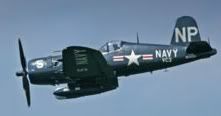ORIGINAL: Fishbed
There were near to no subs operating from PH in December. Submarines use diesel in relatively small quantities that is easily replaced. Unreliable torpedoes are the main cause explaining the US subs lack of efficiency in the first half of 1942, which means that the few patrols that *might* not have taken place in case of a highly hypothetical complete shortage of Diesel fuel aboard ships at PH and ashore wouldn't have impacted the conflict in any meaningful way.
If based on the figures of the Joint Army-Navy Assessment Committee (JANAC) and making the assumption that the historical subs can't operate from PH for 6 months (Dec '41 - May '42) and instead move back to the West Coast and take no effective part in Pacific operations until PH is again ready for submarines, then this hypothetical impact on the overall wartime submarine effort against Japanese shipping can be quantified with a bit of quick and dirty analysis.
a) Total Japanese sinkings by US submarines 1941-45:- naval vessels sunk = 540,192 tons, merchant vessels sunk = 4,779,902 tons.
b) Total Japanese sinkings by US submarines based out of PH for 6 month period Dec '41 - May '42:- naval vessels sunk = 15,597 tons, merchant vessels sunk = 113,487 tons.
c) % of historical wartime Japanese sinkings by US submarines forgone by this 6 month scenario:- naval vessels = 2.9%, merchant vessels = 2.4%
This was the only sig line I could think of.


 [/center]
[/center]





